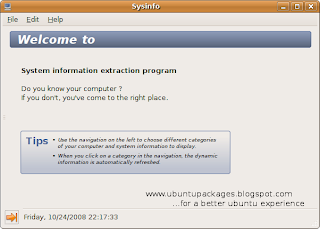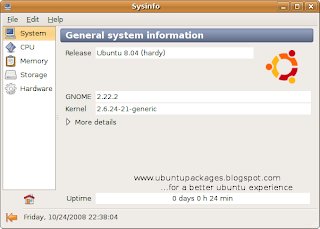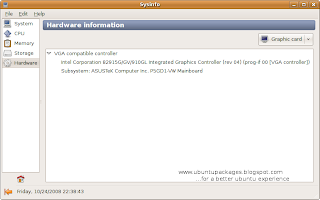
'Sysinfo' claims to help you know your system better.
Install 'Sysinfo' from the 'Synaptic Package Manager'(section-utilities (universe)).Launch it from the 'System Tools' menu.
Five different categories provided on the left provide relevant system information.
'System' gives the details about the OS,Xorg version and also displays system uptime.
'CPU' provides the details of the CPU model name and frequency.

For RAM and Swap info,checkout the 'Memory' section and for the hard disk details select the 'Storage' section.
The 'Hardware' section is the most detailed section.Use the drop down menu provided at the top right to select a device (motherboard,sound card,graphics card and network) .Corresponding to the device selected,relevant information is be displayed.

Configure 'Preferences' under the 'Edit' menu.Enable or disable the initial animation ,select the start section here.'Sysinfo' can also save system details in a simple text file.Use the 'File' menu to save the system information as a text file.


No comments:
Post a Comment